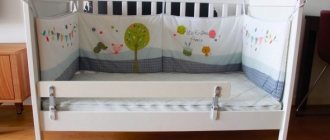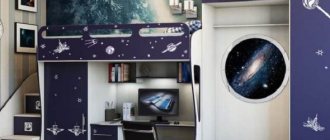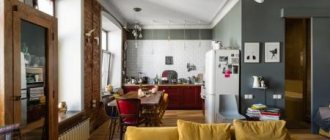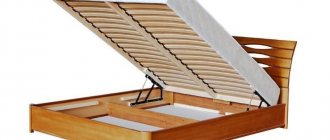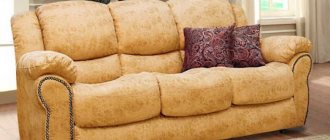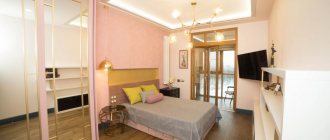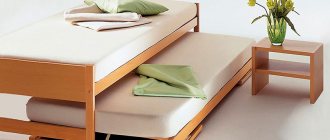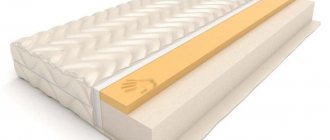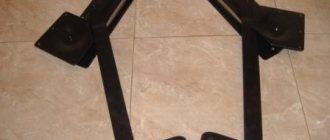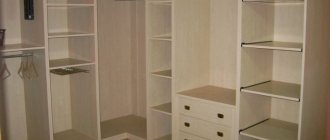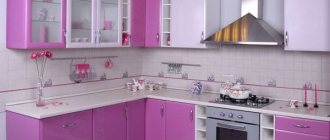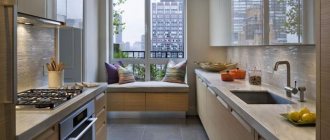02 March 2021
Barriers for children's beds are an original and convenient design, the purpose of which is to provide reliable protection for the baby from falling during sleep. An older child who is accustomed to the railings of a crib cannot control the position of his body during night and daytime sleep. The bumpers limit the child's activity and protect him from injury. They can also be installed on an adult bed when the mother takes the baby to feed or sleep.
Types of sides
Now let's take a closer look at models of cribs with sides.
Conventionally, they can be divided into models with removable and non-removable sides. From a safety point of view, naturally, models with non-removable sides are better, because this reduces the likelihood that a child will dismantle such a fence on his own. In terms of functionality and transformation capabilities, removable sides will provide more freedom of action. The materials of the sides can be very diverse; on this basis they can be divided into the following types:
- hard sides;
- soft sides;
- soft sides on a hard base.
Let's take a closer look.
Soft sides
Soft sidewalls are structurally a tightly stretched fabric over some soft filler, such as foam rubber. The appearance resembles the sides of playpen cribs. It should be noted that the soft sides play more of a decorative role; their protective function is questionable; also, a child can accidentally tear them (or maybe not by accident). Dust also accumulates in soft sides over time.
Hard sides
Typically, solid sides are made of wood, metal or plastic. Most often this coincides with the material of the bed base.
With hard sides you can easily play up the appearance of the crib in the form of cars, robots, various cartoon characters, fairy-tale places and an endless variety of other ideas. Although for ventilation, of course, it is better to refrain from completely solid sidewalls. Also, a child can hit a hard side in his sleep; to protect the baby, you can place a protective soft bumper along the side.
Soft sides with a hard base
This option is a compromise between hard and soft sides, combining their advantages. The structurally solid base is upholstered with fabric; foam rubber or a similar material can be used to form the shape and provide greater softness. Such sides are less traumatic than hard ones and more durable than soft ones.
Disadvantages of this solution: accumulation of dust and low overall strength of the fabric upholstery.
The process of sewing classic sides
After all the preparations, determining all the pros and cons, one unresolved question remains - how to sew the sides into a crib using the classic version of the shape and size? Classic bumpers consist of 4 separate parts, where the longest ones are located along the crib, and the remaining 2 are located at the headboard and end. These are rectangles that are attached to the corner bars of furniture.
If we consider the general algorithm, then the step-by-step instructions will be the following steps:
- Patterns are made from the very beginning. Transfer the dimensions onto paper and draw out the blanks for transfer to the fabric.
- Prepare the base for the filler. Sew a rectangle on three sides. After the 4th, add filler. Sew up the part completely.
- Having removed the parameters from such elements, sew covers for them. You need to think about the clasp. Usually these are tapes or Velcro.
- Sew tape or Velcro onto each corner of the parts, with the help of which the parts will be attached to the rods.
To somehow diversify the simple shapes, you can sew a ruffle from the same fabric along the top of each part or come up with similar other decorative inserts. To make the task easier, you can use a special scheme.
How to sew bumpers for a boy
For a boy, you should choose cool tones of green, blue, cyan or purple. Additionally, you can use various additional materials. Usually these are ribbons and a small amount of other fabrics. Several design options:
- There are no restrictions regarding the choice of design. You can make a fence in the form of houses with a fence.
- The ideal option would be sides in the form of cars or a steam locomotive.
- Animals will become a universal design. These could be dogs, hippos or pandas.
The complexity of tailoring does not depend on the choice of a more original shape or design.
How to sew bumpers for a girl
When you sew the bumpers for a baby crib yourself, you definitely choose the design and color yourself. If this “gift” is being prepared for a girl, then you need to take into account several points:
- Typically, pink or powder-colored fabrics are used.
- Satin, lace, and satin ribbons can be used as finishing.
- Girls respond well to images of animals, so you can make fences in the shape of different animals or simply sew faces on classic borders. Usually this is a cat, rabbit, elephant or cartoon character.
- The fences, which are made in a royal theme, look original.
The main thing is to choose delicate colors and natural materials
Additionally, pay attention to the baby’s preferences.
How to do it yourself?
If the design of your bed does not provide for a side, but you still need one, you don’t have to resort to buying one, but make it yourself. Moreover, this business is quite entertaining and not so labor-intensive. And your child will always remember such care.
To make a wooden barrier, you will need: four slats, planks or shaped blanks straight from the inside and two long wooden blanks. It is clear that the four blanks must be identical and strong enough, because they will bear the entire weight of the product and with their help the limiter will be attached to the bed.
To prevent such fastenings from scratching the surface of the bed and sliding, it is possible and even necessary to rubberize them on the inside. Two blanks are attached perpendicular to one long rail, and two to the other.
This way you get two U-shaped products. These two products need to be fastened together with bolts and put on the bed frame.
Screwing in the bolts must be continued until the compression of the two halves of the limiter ensures its stable position.
If you have in your arsenal a tool for cutting plastic pipes, as well as the pipes themselves, you can easily make your own version of the limiter. To do this, you will need 8 tubes of the same size, which will provide the height of the barrier and 14 tubes, the size of which depends on the distance you want to get between the slats, 12 T-shaped corners and 4 L-shaped ones.
Expert opinion Ksenia Petrovna Romanova Expert in the field of interior design, as well as the head of a fabric sales salon
This product is assembled quite easily and quickly, like a construction set. Such a limiter will not have sharp corners.
If desired, it can be covered with soft fabric.
You will learn more about how to make a bed restrainer with your own hands in the following video.
A low-cost manufacturing option is to make a barrier from pipes.
Moreover, if you need a high barrier, you can stack the pipes into several floors with ordinary tape. Such a limiter is secured under the mattress with strong tapes. The advantages of the product are that it is a budget option, it can be easily washed, the design itself is very light, assembly is not difficult, and the soft sides do not injure the child.
If your child is very small and you need a soft border around the perimeter of the crib to avoid injury to the baby’s arms and legs, you should give preference to natural fabrics that will not cause allergies in the baby. The size of the fabric should match the size of the sides of the crib. You can use synthetic winterizer as a filler.
This way you will have thin pillows that match the width and length of the bed. They are fastened with ties or Velcro, which must be provided in advance in the design of the side.
Foam tube construction
The lightest and simplest limiter is a design made of dense insulating foam pipes. You can fit one piece on both sides of the bed, connecting them under the mattress with ribbons.
If a larger barrier is required, then you need to take 3 pipes and also tie them together or fasten them with thick gray tape. The design is easy to assemble; even a baby’s mother can do it. The products are quite soft, so a child will not feel pain when hit with a foot or hand. At the same time, the foam rubber is elastic and does not deform when pressed. The parts can be easily disassembled and washed.
Having made a barrier for the bed themselves, parents can be absolutely calm about the safety of the baby. A self-made limiter will serve for a long time, reliably, and its cost is lower than a purchased one.
How to install a baby bumper on an adult bed
If a child sleeps with parents who are concerned about his safety while sleeping, bumpers on an adult bed for the child will be a way out of this situation.
It is advisable to choose restraints with removable fastenings, because the child will grow up and move to sleep on his own bed after some time.
Universal removable restraints are an ideal solution for arranging a sleeping area in any bed; they are easy to attach and just as easy to remove.
It is necessary to choose the appropriate size, either for the entire length of the bed, or a partially retaining side, depending on the age and sleeping behavior of the child.
Otherwise, the manufacturing recommendations are the same as for the previous options.
The presence of special racks in the design allows them to be adjusted in height.
Sides for a children's bed are a useful and necessary device that does not have to be purchased in a store, but can be made independently by involving an older child in the process, giving the opportunity to choose materials and decorative elements according to their preferences.
Most parents who purchased crib restraints for their children were satisfied with this purchase.
Choosing the appropriate height and side size
The height and size of the sides should be selected based on the child’s age and degree of mobility in order to ensure the baby’s safety not only in sleep, but also during active games in the bed.
| Child's age | Types of activity | Side height, cm | Item size |
| 0–6 months | The child lies in the crib, turns over, sits up, tries to crawl | 30–40 | Full length of the bed |
| 6 months - 1 year | The child gets up in bed, holding onto the railings, actively crawls, tries to climb over the sides | 70–90 | Full length of the bed |
| 1–3 years | The child stands confidently on his feet, walks, gets in and out of bed independently | 20–30 | Full length of the bed |
| 3–6 years | The child gets up and lies down independently; the bed can be in a room separate from the parents’ bedroom | 20–30 | Partially covers the long edge of the bed |
| Second tier of bed regardless of age | — | Approximately 20 cm | Full length of the bed |
The height of protective barriers should also be chosen based on the child’s motor activity. The maximum value should occur at a time when the baby is still unsteady on his feet, but already wants to actively explore the world - he stands up in the crib, holding on to the sides, and tries to get out of it, crossing his legs. It is between the ages of 6 months and a year that the risk of injury from falling out of bed increases several times compared to any other age. A high side is necessary so that the child does not fall when trying to climb over it.
Types of sides
Sides come in several varieties. Before you start working, you need to choose the right one. Here are the most common ones.
- From pillows. In essence, they are pillows tied to the railings of the crib. They are convenient in that the latter can be used in the future for other purposes. Provide reliable protection for the baby from drafts and shocks.
- Removable. They are a small wooden structure. It has grooves that are attached to the crib. The outer sides of the structure are covered with soft-lined fabric.
- With replaceable covers. They are a large case with several pillows placed inside. The result is one big one.
- Tall. They are a kind of analogue of a quilt. They have fastenings for tying to the bed. Cover most of the railings.
- Low. Similar to high ones, but cover half the height of the railing (or less). They provide less reliable protection for the baby from impacts, but guarantee better ventilation.
- Rollers. They are an analogue of sofa cushions. They have ties for attaching to the railings. They only cover half of them. They combine the properties of low sides and pillow products. They resemble a kind of bumper.
- With pockets. Essentially, these are high sides with pockets sewn onto the outside. You can store various little things needed to care for your baby or your favorite toys in them.
Side for the crib
Existing types of fall protection
The sides can cover either only the sides, which is suitable for newborns, or the entire perimeter, which is more important for older and fairly active children. They can either be part of a crib and look like panels without sharp corners, upholstered in soft material, or they can be removable. The latter option is more preferable, as it allows you to use limiters only when necessary.
This side will protect the baby from damage. It's soft and cozy.
The heights of the barriers are high and low. The former cover the bars of the crib completely and are used for babies, while the latter cover only partially, which makes them more comfortable for older children.
For older children they make these removable sides.
Restrictors are also divided by gender. As a rule, for boys, products are chosen in turquoise, green, yellow, brown or blue tones without excessive variegation. For girls, brighter models are purchased in pink, beige or coral colors using decorations in the form of lace and subtle ornaments.
The variety of colors of the limiters is amazing. You can match the side to the interior of the room.
Soft
Soft restraints are divided according to the type of filler. The most popular materials are the following:
- Sintepon, which is usually used in barriers for babies without the use of covers.
- Fiber, which is an elastic and dense material that holds its shape well and is suitable for children of different ages.
- Foam rubber, before purchasing which you should read the quality certificates.
- Natural wool, which is very warm, but can cause an allergic reaction.
- Periotec, which is a relatively new hypoallergenic material that is easy to wash.
- Hollcon, which has high wear and heat resistance, flexibility and hypoallergenicity.
- Polyester fabric, resistant to the absorption of odors and moisture, as well as wear-resistant and hypoallergenic.
Layers of material are twisted into tubes and fastened to each other, which makes it possible to obtain a stable and inseparable structure. Depending on the number of such rollers, the height of the barrier also changes.
For soft sides on the bed to prevent a child from falling, removable covers are used, which must be washed regularly to remove dust. For fastening to the bed and mattress, ties or Velcro are most often used. They are thrown over the barrier and securely fix the side. It is better to use grosgrain ribbons as ties rather than satin ones, as the latter unravel too easily.
Net
Barriers in the form of a mesh are used for the cribs of older children who sleep separately from their parents. They allow the child to observe everything that is happening in the room, as well as have free access to fresh air.
Such a mesh must have high strength and be able to support the full weight of the child. In order for the structure to be reliable, a frame for the mesh should be made and carefully secured. It can be made of metal stops or wooden slats. The mesh structure itself is softened by foam cushions or fabric covers.
Wooden
They are most popular and often come with cribs. They are durable and versatile, and are suitable for almost any design solution. At the same time, they are absolutely safe for children and easy to use. In addition, wooden barriers are used not only for children, but also for teenagers, used as a limiter on a bunk bed.
Plastic
Such barriers can either be purchased or made independently from available materials such as plumbing pipes. Plastic sides are highly durable combined with low weight, which is why they are usually not covered with covers. Purchased models have an original fittings system that allows you to attach the system to the bed.
Colors and decor
Among the variety of decorative options for bed restraints for children, everyone can easily find the perfect one for themselves. There are several nuances that will help make the choice easier. Modern psychologists unanimously claim that the younger the child, the more important it is for him to have different colors, patterns and details in his sleeping area. Looking at them every day, the baby develops vision, perception of color, size and perspective. Therefore, it would be a mistake to purchase monochromatic designs - it would be better if they had a small print of delicate pastel colors.
Traditionally, pink interior items are chosen for girls and blue for boys. This is an optional rule. Combinations of simple colors in soft shades look good - blue and yellow, green and pink.
An older child’s room or corner can be decorated in simpler shades, repeating the color scheme of the nursery’s interior. It’s good if it reflects the baby’s character or his hobbies. For a comic book lover, you can choose models with superheroes depicted on them, and for a young car collector, you can choose a racing track.
Important nuances of choosing a children's red bed, thematic models
When choosing a design option, it is important to pay attention to the properties of colors. So, yellow lifts the mood, green calms, and orange excites the psyche. In any case, it is recommended to refrain from an abundance of such active colors as black or red, or introduce them very carefully, with small color accents.
Types of limiters
Limiters are different; they can either completely or partially cover the side of the bed
Full coverage is important for young children, partial coverage will be sufficient for older children to limit falls.
Such devices can be built-in, that is, the design of the bed provides for the presence of such a barrier in advance.
Bed barriers can be either removable or built-in. Removable ones are especially convenient because you can take them with you on trips, so that you can protect your baby on the road.
There are also limiters:
- Factory;
- Made to order according to individual measurements;
- Homemade.
You can also buy a limiter separately if you need it.
By material type
Sides are divided into several types, depending on the material from which they are made.
Soft
It is the simplest model of a limiter; it includes: foam rubber, padding polyester, which is rolled into a tube and, if necessary, several rollers are connected one on top of the other to achieve the desired height. Covers can be placed on top; they are usually attached to the mattress using laces or Velcro.
You can choose the material from which the product is made based on your tastes and preferences.
Reticulate
An effective solution to prevent your baby from falling at night while sleeping. Most often, nets are installed in a frame made of wood, metal or durable plastic.
The color variations of such sides are also varied.
Plastic
A rather convenient and practical side, despite its lightness, is durable and reliable. It is easy to use, warms up quickly, is easy to clean from dirt, and will not damage the baby’s skin if accidentally broken. Easy to make, you can make it yourself from plastic tubes at home.
As a rule, children's beds designed for very young children are always equipped with a built-in barrier.
Wood
A classic version of a barrier for a children's bed. Strong, reliable, durable. Fits perfectly into the bedroom interior, looks aesthetically pleasing and expensive. There are many variations in appearance and shape, it all depends on the owner’s imagination.
The minimum height can be selected if the child is constantly in a lying position, that is, for infants.By mounting method
There are several ways to attach the holders to the crib:
- To the base of the bed;
- To the side walls of the bedroom;
- To the side of the crib;
- Under the mattress using a metal frame;
In this case, the side is held down by the weight of the child, suitable for children over two years old;
- To the mattress using Velcro and laces;
- Universal, for mounting on both horizontal and vertical planes.
Beautiful examples
Properly selected protective bumpers are ways to decorate a children's bed, making it more comfortable and attractive. Such designs can have absolutely any design design, from simple to non-trivial
When choosing the best option, it is important to consider not only the gender of the child, but also the surrounding colors in the interior
The sides in the form of multi-colored pillows of different shapes will look very beautiful and cute in an ensemble with a snow-white high crib. These items can be made from fabrics in yellow, blue, gray and white. Patterns in the form of contrasting stars, elephants and wavy stripes will look harmonious on textiles. This cool but cozy ensemble is ideal for a little boy whose room is decorated in white tones.
If we are talking about arranging a beautiful round-shaped crib, then it is permissible to turn to a non-standard solution - to place pillows in the shape of animals around the perimeter. These can be cats, hares, foxes and small charming deer. Such parts are often made by hand. The result is very interesting and cute ensembles. You can add a side to the crib in the form of a soft cushion. This can be not only a simple round-shaped part, but also a more original model, made in the form of a dragon, dinosaur or crocodile lying in bed. Such interesting bolsters are best suited for cribs belonging to little boys. For girls, figures in the form of unicorns or cats are suitable.
Children's beds can be equipped with bumpers with a hard base and a soft rounded pad on top. Such pieces of furniture are suitable for preschool children. For example, it could be a neat rectangular model made of natural wood with sides around the perimeter and soft woven elements on the sides. Textiles on such a bed can combine several different colors and patterns. For example, it could be a “lively” combination of white and green shades, complemented by floral prints of different colors.
It is permissible to tie high sides around the perimeter, made in the form of a large owl at the headboard. The crib will look more interesting if its sides are decorated with prints of many little owls.
To learn how to make bumpers for a baby crib with your own hands, see the following video.
How to make a fall protection bed with your own hands
You can easily make a do-it-yourself limiter for a children's bed of any kind at home, both from scrap materials and from inexpensive building materials, despite the fact that this attribute will serve as long and reliably as the factory one.
If the built-in limiter is a series of vertical slats, then the arms and legs of babies can get stuck between them. In this case, a soft border is also necessary.
How to make a bed restrainer from wood with your own hands
First, you need to decide on the method of attaching the limiter; the easiest way is to attach it to the side of the bed, but this may not be a very aesthetic way and will damage the structure of the crib. You can choose any convenient one from the list of mounts listed above.
For older children, who are around the age of three, you can choose low restraints to prevent them from falling while sleeping.
Decide on the future design and shape of the holder. Prepare the necessary material and tools, namely:
- Reliable wooden bars;
- Hacksaw;
- Self-tapping screws and/or bolts;
- Screwdriver;
- Ruler or tape measure;
- Paper and pencil.
To make the simplest U-shaped barrier, which will be fastened with bolts, you will need slats 55 cm long; the height is selected individually, can be from 15 to 30 cm.
For a crib measuring 70x120 cm, a side with a height of 70 cm will be optimal.
Step-by-step description of the side manufacturing process:
- Draw a schematic diagram of the proposed barrier for the crib, taking into account future dimensions;
- Cut the wooden slats according to the dimensions indicated in the diagram;
- Carefully fasten the bars together to ultimately obtain a U-shaped frame.
- Drill holes for fastening bolts on the installed barrier and the side of the bed;
- Screw the limiter to the bed using bolts.
Older children need curbs to prevent them from falling while sleeping.
Side made of material
To do this you need:
- Take measurements of the crib;
- Construct a rough plan of the building on paper;
- Purchase foam rubber or padding polyester, fabric for the cover and fasteners in the required quantity;
- Roll up rolls of material and stitch;
- Sew covers of a suitable size;
- Sew fasteners onto the covers and mattress;
- Attach the restraint to the bed.
The color scheme of the bed limiter, as well as the bed itself, depends entirely on the flight of your imagination.
Plastic side
Pipes purchased from the plumbing department of a hardware store work well here. They are easy to fasten together, the fastenings are strong, and the whole structure is quite simple.
The holder can be attached to the side of the bed, to the bottom of the bed, or under the mattress, if the age and weight of the child allows.
Removable restraints are installed, as a rule, only on part of the bed, and therefore are suitable for older children - approximately three years of age and older.
Mesh side
- Measure the bed;
- Plan the approximate size and design of the limiter;
- Purchase materials: strong mesh, slats made of wood, metal.
- Cut and fasten the frame from the slats;
- Attach the mesh in the middle;
- Cover the frame with a suitable fabric or thoroughly sand the surface of the wood and varnish it, let it dry.
- Attach to the bed in any convenient way.
Parents traditionally prefer pink for a girl and blue for a boy.
Side for newborns
How to make a side for a children's bed so that the child does not fall? Restraints on newborn cribs are necessary not only to prevent children from falling, but also to soften the hard parts of the bed.
This function can be performed by soft woven bolsters and pillows placed around the perimeter of the crib and covering sharp corners.
In cribs designed for newborns, restraints are installed along the entire length, safely limiting the space of the crib.
Natural hypoallergenic materials are suitable for making barriers. It is not advisable to use hard parts to decorate the sides, because they can scratch the delicate skin of babies, or get into the respiratory tract and cause suffocation.
For the little ones, soft models of bumpers are available. They can cover the crib on four sides, or they can only be attached to two long sides.
Review of the best manufacturers
The Summer Infant bed restraint is suitable for children from one and a half to six years old and prevents the child from falling while sleeping. The device is easy to assemble and does not require any tools. The size of the side is 108x53 centimeters and is suitable for mattresses measuring 70-90x140-190 cm. The advantage of this limiter is the ability to tilt it down. The price of such a device is approximately 3,300 rubles.
Tomy bed restraints are available in pink and blue. The barrier is lined with soft fabric so that the child does not get hurt when touching it. The limiter is installed under the mattress, the width of which should be from 70 to 90 centimeters. The barrier is held in place by the weight of the mattress and the sleeper, and has a 7-centimeter bend at the other end to prevent slipping from under the mattress. The child can put his favorite toy in the pocket located on the barrier. If desired, it can be folded down to provide access to the child. The price of such a device is approximately 3,000 rubles.
The compact folded size has a Babies side stop and is suitable for those who like to travel with a child. The size of the device is 140 x 50 centimeters and is suitable for children aged three to five years. This barrier is attached above the mattress using a unique fastening system, thanks to which it can be removed very quickly. The bright design of such a side will appeal to most little ones.
The soft Baby nice side is made of cotton material. The Periotec filler used in this product is an environmentally friendly material. The product serves to protect the baby’s arms and legs from being pushed between the slats of the crib and from drafts.
Gate for the curious
The child, having finally received the long-awaited freedom and the opportunity to crawl, makes the most of it. You can see this inquisitive explorer in any unexpected places in your home. To prevent the baby from getting injured, and at the same time be able to satisfy his curiosity, you can limit his movements not to a playpen, but, for example, to a room, or, for example, to block the passage to a personal plot. Stylish and beautiful gates will allow you to observe what is happening outside the bed, but not to end up in a dangerous position. You decide at what time to make more or less available area for research.
Bumpers for a baby crib
Protective sides for a child's bed are installed around the entire perimeter, covering the wooden or plastic sides, thus softening the blows from an accidental fall and reducing the risk of injury to the child.
Whether soft bumpers for a child’s bed are really necessary elements, we’ll figure it out now.
In fairness, it is worth noting that using them has its pros and cons.
The advantages include:
1.) As we said earlier, this is shock mitigation and protection, especially for the baby’s head.
2.) During sleep, children love to stick their arms or legs through the pad, which can lead to dislocations, so the presence of a side prevents this to some extent.
3.) The bumpers make the bed comfortable and serve as a specific “curtain” from the outside world and help the baby fall asleep smoothly, preventing him from being distracted.
4.) They prevent dust and foreign particles from settling on the baby’s bed. They also prevent toys and pacifiers from falling out of the crib.
The disadvantages of using sides are as follows:
1.) Point 4, which refers to the “pros”, is at the same time a “minus”. A lot of dust accumulates in the sides, which the baby has to breathe. Therefore, from time to time the sides have to be washed or knocked out from dust.
2.) The sides restrict the flow of fresh air to the child.
3.) The older the child gets, the more useless they become.
The child shows curiosity, he is curious about what is happening outside the cradle and tries in every possible way to pull the sides down.
Advantages and disadvantages of crib restraints
Let's look at the positive and negative aspects of using this solution. Among the obvious advantages of limiters, it is worth noting the following:
- The presence of a side does not make the baby worry about a possible fall on the floor while sleeping. Installing a barrier gives the child a feeling of complete security. Therefore, when he is in the crib, he behaves extremely calmly.
- Parents do not have to worry about the blanket or mattress sliding off the bed and the child having to freeze.
- The sides, which run along the entire perimeter of the bed, protect babies from drafts.
- All kinds of toys can be hung on the stoppers with slots, which reduce the child’s anxiety level during rest.
As for the negative aspects, they relate primarily to limiters made of soft materials. Thus, fabric products are capable of collecting dust and dirt that the baby will have to inhale while in the crib. Soft materials get dirty quite quickly and require careful care and frequent washing.
If there is a solid side, the supply of fresh air and visibility is blocked. The last drawback does not allow the baby to explore the environment. If the limiter is presented in the form of vertical or horizontal rods, there is a possibility that the child will simply get stuck between them and get injured.
Types of limiters
Based on the fact that a bed rail can be used in a variety of cases, for different categories of users, and can also be installed on different types of beds, there are a huge number of product varieties. To correctly choose a functional and reliable protective board, you should understand the features of each type.
By material type
Bed restraints are made from a variety of materials. He can be:
- soft;
- mesh;
- plastic;
- wooden.
For the youngest children sleeping in a separate place, soft bumpers are ideal. Such restraints for a child's bed are made of foam rubber, thick enough so that the baby does not hit the hard bars of the partitions while sleeping. As a rule, such products are equipped with one or more fabric capes. The removable cover can be changed and washed when dirty.
The mesh side is suitable for older children or those babies who sleep with their parents. Protective barriers for children's beds made of mesh are a plastic or metal frame with fastenings, on which an elastic fabric or plastic mesh is stretched. The undoubted advantage of such a board is its breathability. In addition, such a barrier for the bed does not prevent the child from seeing everything that is happening around him in the room. The mounting method on such devices is, as a rule, universal and allows you to hang the fence on any type of furniture.
A plastic side often comes with a bed. This is a ready-made design with a removable or non-removable fastening. The advantage of the product is reliability and high protective properties. The thickness of the plastic used to make the barriers will not allow even an older child to break through it in his sleep and fall to the floor. In addition, this is a fairly soft material, so additional covering of the structure with fabric and a softening layer is not required.
A factory-assembled functional children's bed is most often equipped with wooden sides. The second tier is subject to increased safety requirements, so even if a teenager sleeps there, the furniture is still equipped with protective guards, because a fall from a height higher than a child’s height carries the risk of serious injury.
Soft
Mesh Plastic
Wood
Features of using the design
The limiter protects babies from birth to 3–5 years of age from falls, regardless of whether they sleep with their parents or in separate cribs. Older children, and even adults, will also benefit from a side rail, preventing them from falling from the top floor of a bunk bed. Increased safety requirements are imposed on such a sleeping place.
In some cases, a barrier can also be installed on a bed for the disabled to provide safety for people with limited mobility. Such structures must be characterized by increased strength of the material and fastenings in order to withstand the weight of an adult’s body.
In addition to its main function, a bed restrainer can perform additional tasks:
- Protecting the child from drafts. If the bed is placed in a ventilated place or in the direction of the flow of air cooled by the air conditioner, the barrier will prevent the baby from becoming hypothermic. For this purpose, you should choose a model with dense walls.
- Insulation of cold walls adjacent to furniture. In order not to hang wall hangings that have long gone out of fashion, you can insulate the wall with a soft fabric stopper. It would be good if there was foam inside.
- Stylish interior solution. A bed rail, harmoniously combined with the decoration of a children's room, can become the highlight of the room.
When choosing safety barriers for beds, you should pay attention to a number of characteristics: the height of the product, the quality of fastenings, decor and color scheme, thickness and type of insulation. It is also necessary to take into account the child's age, bed size and room design. Particular attention should be paid to the quality of the materials used to manufacture the limiter. Products for children must undergo certification confirming that the product is safe for health, and its characteristics are verified by special tests.
